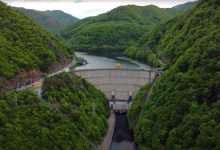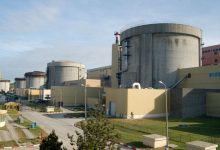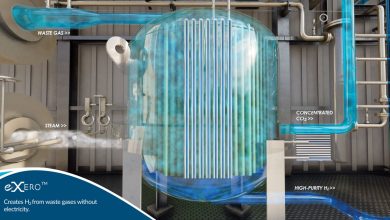Energy Transition vs Risk of Having a Two-speed Europe
The energy transition is a pathway toward transformation of the global energy sector from fossil-based to zero-carbon by the second half of this century. The question is: at the end of this process, is there any risk of having a two-speed Europe?
With the onset of the industrial revolution, the lifestyle of Western societies was inextricably linked to the presence of readily accessible energy. The model of ‘modern’ and energy-consuming civilization has spread widely across the globe and continued to gain ground in developing countries. This was possible due to a source of energy provided, mainly, by fossil fuels. History shows that humanity regularly experiences energy crises. The problem is no longer the depletion of conventional gas sources (especially due to discovery of shale gas), but mainly the consequences caused by energy consumption, which affects the environment. The recent explosion of unconventional fossil fuels – oil sands, shale gas, deep offshore drilling – has led to increased risks on the environment, as well as a citizen protest movement. At the beginning of the 21st century, a large-scale energy transition becomes more than necessary. It must be part of the transition to decarbonized economy, essential for climate stabilization. However, fossil fuels dominate the fuel mix. Almost 77% of the energy needs of a European is satisfied by oil, natural gas, and coal. Nuclear power ensures 14% and the rest of 9% is provided from renewable energy sources.
In Romania, CO2 emissions from fossil fuels fell by 2% during 2018-2019, due to a reduction by 9% in the energy industry. However, they increased by 6% in the transport sector. In total, CO2 emissions in the country fell by 25% since 2005 and by 58% during 1990-2020. The worst performance is found in the transport sector, where emissions increased by 59% in the last 30 years, period during which the reduction of emissions in industry and energy, constructions and other industrial segments was significant, in the last 15 years, according to EDGAR (Emissions Database for Global Atmospheric Research) report.
Romanians and the European Green Deal
By 2050, Europe should be an emission-free continent. It seems idealistic and maybe it is idealistic because it is a target aimed to mobilize us and in which several practical measures are included. In Romania, the reactions, when it comes to the Green Deal, are like “you ask us to use the cars less, but we don’t have highways yet,” or “we haven’t started Black Sea gas exploitation and now we need to think about the next stage,” or “you mention overconsumption and in fact we face energy poverty.”
The reactions are natural, but they cannot cancel the importance of the Green Deal. The main arguments include the fact that European partners and scientists say we have no choice if we want our planet to be habitable for our children, grandchildren, and great-grandchildren. Romania has chosen to be part of the EU knowing very well that it is a group of developed countries. Therefore, we have chosen to sit at the table with these countries and we need to be able to give some answers. In fact, it is a flexible deal, it is not carved in stone, so we still can participate in this European debate. We could find inspiration in the digital sector as a model, to help us take the next step (leapfrog). The Green Deal is a wide hat that also includes measures against excessive use of plastic, promoting biodiversity and measures in the field of transport etc.
Energy transition in a Romania with a 20% share of coal
Cristina Pruna, Deputy Speaker of the Chamber of Deputies, believes that: “The European Green Deal is a topical issue at European level, but also in Romania. When we talk about the European Green Deal we tend to look to the future (towards 2030 or 2050), but things have already started to change. There have been several preliminary steps, such as the Paris Agreement (2015), but also the other targets that have been established at EU level. We therefore realize that things are already taking place. The pandemic context has brought changes in terms of food and environmental impact: we work more from home, we use the cars less.”
The Green Deal starts from a reality: between 1990 and 2018, the quantity of greenhouse gases fell by 23%, while the European economy grew by 61%. This proves that there are perspectives and economic growth can be decoupled from the use of fossil fuels. Conclusion: the objective of neutralization of CO2 emissions could be achieved in theory.
“It is important that these ambitious targets do not affect too much the industry and the millions of jobs in the EU and therefore in Romania. There has been a lot of debate on this process of transformation on polluting industries, such as production of fossil fuels (coal) and we look increasingly more at natural gas. Energy transition is essential for reaching the climate goals, but from the national perspective we are trying to find solutions. Romania still has in the electricity production mix a coal share of about 20% on which we depend, especially in situations of low water flow or lack of wind or sun, when renewable energy cannot be produced. On the other hand, reduction, and elimination of this type of energy could have a social impact, especially in Jiu Valley, in Gorj, monoindustrial areas where most jobs depend on this industry. Unfortunately, now we don’t have much to put instead, and we should have analyzed how to boost other economic activities. Obviously, there are plans in this regard. We have the Just Transition Fund, but other local measures are also needed. For Romania, natural gas is still a key resource for achieving the energy transition. Romania ranks 2nd in Europe in terms of natural gas production and I believe this potential must be further capitalized, natural gas must still be seen as a transition fuel. We have been talking for years about Black Sea gas resources and unfortunately these investments haven’t been started due to a legislation that did not stimulate investors to take this step. Instead, I hope that soon we will amend this law in Parliament (it is a project of the Ruling Coalition), so that resources are exploited. We are still talking about the expansion of smart gas networks. There are European funds of EUR 1bn to implement this project and to move forward with the interconnection of gas infrastructure to the European one. Romania was one of the first countries to fulfill their targets in terms of renewable energy in the final gross energy consumption for 2020,” added Cristina Pruna.
Just like Poland, Romania started a process of gradual elimination of coal, and in recent years the country has been importing increasingly more gas. Facing an ever-increasing demand and from desire to expand its gas network, Romania wants to find other sources. This is the moment when Black Sea gas comes back in the spotlight and becomes a practical solution thanks the discovery of a large deposit in the deep waters of Neptun block (2012), estimated between 60 and 80 billion cubic meters.
The private sector will have to participate in supporting energy transition

“In the context of Black Sea potential, we are currently considering a law to create the framework for investments in offshore wind power capacities in the Black Sea to be feasible. We are also considering an amendment of the Offshore Law so as to boost new onshore production capacities, wind and solar, by regulating some types of bilateral contracts. It is important to also take steps in terms of energy production from hydrogen. We have a European strategy, launched in 2020, there is also a Hydrogen Alliance that includes Romanian research centers. Moreover, the Ministry of Energy is working on a hydrogen energy strategy. In Romania there is a legislation that allows consumers to become small energy producers to ensure their own consumption and surplus to be sent into the grid. There is a program that subsidizes photovoltaic panels (EUR 4,000) which, unfortunately, is currently blocked at the Environment Fund Administration. It is important to know that this energy transition must be accessible for both consumers and companies and obviously it is essential to make sure that Romania is fully integrated, interconnected and digitized in the European market, so that these costs are not a burden for the entire economy. The good news is that we have multiple European sources of funding: Just Transition Fund, NRRP (National Recovery and Resilience Plan), with EUR 30.5bn, and the Multiannual Financial Framework. It is not enough, so the private sector will also have to support this transition, which involves the creation at legislative level of this framework for private investors to be willing to invest,” concludes Cristina Pruna.
Fossil energy still under discussion
Except for the fact that a new obstacle emerges, as the European Union changes direction, although energy security and independence have been privileged in recent years, fight against carbon emissions is the one that takes precedence. With the Green Deal for Europe and the future recovery and resilience plan, fossil fuels, which include natural gas, are banned. The European Investment Bank (EIB), which has granted loans for the Black Sea oil and gas project, has announced that it would no longer finance new gas extraction projects in 2021. The announcement hasn’t been made yet by the European Bank for Reconstruction and Development (EBRD), which has also financed such projects. The discussion remains open in Europe in terms of natural gas. Countries like Poland, the Czech Republic and Romania see “energy transition” as the switch from polluting energy to cleaner energy. Officials in Brussels must be persuasive, as we will still need gas, because renewable energy remains intermittent and we need to find more flexible resources, and this is the case of hydrogen or biogas, which can be “cleaner”. But investment in these types of gas costs a fortune, which will be felt in the price imposed on consumers.
At least until 2040, coal, oil and natural gas will continue to produce up to 77% of the necessary energy, according to Energy Information Administration (EIA). While countries with solid economies reduce their fuel consumption, not the same is expected for developing countries. Despite this apparent balance, total energy consumption is estimated to grow by almost 30% in the following 20 years.
Therefore, globally, natural gas will register the biggest growth as primary energy source after renewable energy. According to EIA, use at global level of oil and other liquid fuels will increase from 90 million barrels per day (bpd), the value in 2015, to 104 million bpd in 2030 and 113 million bpd by 2040. Renewable energy being a cleaner source than coal or oil, many states switch their attention to these resources as they will implement national or regional plans to reduce carbon dioxide emissions.
In terms of global coal production, EIA estimates that it will remain constant, at approximately 9 billion tons until 2040, and consumption will probably grow by 0.2% per year until 2025 and then start to fall.
Romania will not give up energy production in thermal power plants and will continue to use coal, but under the conditions and based on decisions of the European Commission transposed into the current legislation. The new EIB investment policy will prevent financing for most projects based of fossil fuels, including those on natural gas, which gives a blow to projects worth billions of dollars in this sector.
One of the conditions imposed by EIB for projects applying for financing is for CO2 emission to be lower than 250 grams for each kilowatt hour of energy produced, which means that it will cease financing for gas-fired power plants, using traditional technologies.
Two years ago, Romania was criticized by the European Commission that it aimed to increase only to 27.9% the share of energy production from renewable resources, by 2030, while it could increase it to 34%. The energy strategy provides that in 2030 the share of production based on fossil fuels will fall from 9% to 11%, but the new financing conditions of EIB lead to an increase in the cost of investments by billions of euros.
The greatest risk, a two-speed Europe
“Although the European Green Deal seems a top-down initiative (from Brussels to the Member States), I think the Green Deal is in equal extent a bottom-up initiative. The initiative will be successful if account is taken of Member States’ views, to concretely deliver the fulfillment of the goals undertaken. While several years ago we wanted, primarily, electrification and access to energy and only then were we talking about energy security, today energy production from non-polluting sources becomes extremely important. Romania must adopt a strategy because everyone wants to know where we’re heading. There should be a cross-party agreement on the energy strategy. It is the only way to achieve this goal. If every time a new government restarts everything from scratch, we won’t make it too far. Transition will have certain impact: conventional production capacities will have to be removed, which will have to be replaced by something else. We have the experience that proves that Romania can make this transition, which will be gradual (thinking only about the time needed to make the construction of new production capacities such as gas turbines, which take years),” believes Victor Grigorescu, former Energy Minister.
And yet, there are significant obstacles in the way of this energy transition. There is increasing reluctance among population regarding energy measures leading to an increase in electricity prices.
“If we miss the target of achieving a realistic step-by-step transition, returning to the goal will be difficult. If we remove only production capacities creating social problems without putting anything instead or if we outbid the technological advance in certain sectors (e.g., hydrogen), the risk can be of two types: system problems and problems with assuring resources in certain periods, as well as the risk of losing the confidence of citizens in the transition process. For people, the notion of transition will be mistaken for the loss of jobs and for monoindustrial areas remaining in decay and with no future. An opportunity is digitization, which brings an additional service to consumers by democratizing the market. Another risk is posed by the fact that we still have problems with energy poverty, with the sustainability of bill payment. What is even tougher is the direct proportionality between energy poverty and high consumption caused by the lack of resources to purchase, perhaps, quality equipment. Romania has a mix of energy production (gas, nuclear power etc.) that is still balanced, which leads to the implementation of a transition with own resources. We are currently involved in the decarbonization process. Complexul Energetic Oltenia is in full process of negotiation of a decarbonization plan, with the European Commission. The great risk is that, at the end of this transition, we could have a two-speed Europe: that of the West focused on state-of-the-art technologies, and that of the East, without the possibility to access them, so that we are forced to ask ourselves the key question whether the EU represents a common future for Member States. The answer should be undeniably yes,” says the former Energy Minister.
From 54,000 to 4,000 miners in the following 30 years
In January this year, Energy Minister Virgil Popescu stated: “Romania supports the European Green Deal, but coal represents now an important part of the Romanian energy mix. To be able to switch from coal to green energy we need a period as transition fuel, which is natural gas, Romania being a gas producer. Romania has joined other 16 states that support the use of natural gas as a transition fuel. For Hunedoara and for Jiu Valley we have a clear program of reorganization of Complexul Energetic Hunedoara. Basically, based on Ordinance 60, the company will be split in two: Midia power plant will go to local authorities and be modernized, meaning that the coal-fired groups will switch to gas, and Paroșeni power plant together with the four mines will form another complex that already fulfills the environmental standards. But in Paroseni too we can go further by using renewable energy by creating a dam and a hydropower plant where a group can switch to gas. From the four mines, two are already in closing procedure and the other two operate normally. We don’t have a deadline and we avoided to establish a deadline in Brussels, because I want to move forward step by step and see what the other European states are doing. We cannot say that tomorrow we will shut down coal, because it would endanger the security of the national energy system. But we are determined to implement the European Green Deal, reduce CO2 emissions, and assume the proposed targets. As far as jobs are concerned, it is obvious that they will be affected. In the period of transition to green energy, Romania will use the Just Transition Fund, made available by the European Union to efficiently manage the reforms assumed and to retrain the personnel in areas that will be affected by giving up coal. The personnel will be relocated and retrained. I want to see built in Romania solar panels, photovoltaic cells which we currently import, and this will also generate jobs.”
Without investments in recent years
While the Romanian Government is in full process of preparing the budget for its national recovery and resilience plan, NGOs such as Bankwatch, WWF and Greenpeace took a stand against funding for gas extraction projects. The representatives of NGOs believe that there are so much potential renewable energy sources, in offshore Black Sea wind power, for example, but there was almost no investment in recent years, especially in research. Transition means considering funding for research and development, funding for digitization and schools for training professionals in new energy sectors. It is not only a matter of making a transition by building 300 kilometers of pipeline, otherwise we will get stuck in the same model and nothing will change.







